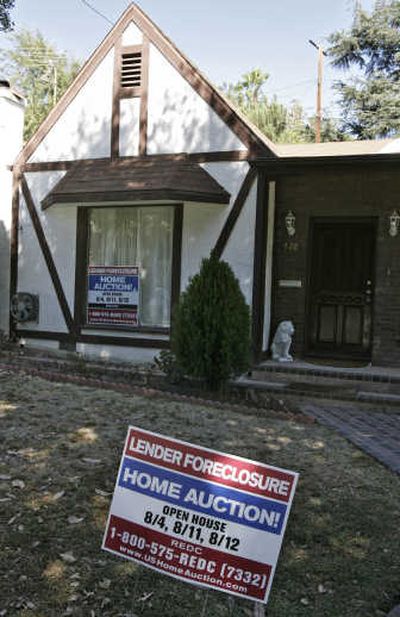From subprime to prime time

WASHINGTON — Where other lending executives see misfortune, Ronald Hermance sees a chance to grab business from the competition.
Hermance’s bank, Hudson City Bancorp Inc., a regional savings and loan in Paramus, N.J. with $50 billion in assets, is handling a 25 percent increase in mortgage applications this year, even as investors stay away from nearly all types of home loans.
“For us, it couldn’t be a better opportunity,” says Hermance, CEO of the bank, adding that his bank has been able to skirt market turmoil by requiring hefty down payments from borrowers and keeping mortgages on the bank’s books rather than selling them to companies that pool mortgages into securities bought by other investors.
Analysts say big and small banks with this more traditional lending approach could grab market share as overextended rivals go belly-up.
“There’s still demand for that product, but the suppliers have gone away,” said Friedman Billings Ramsey analyst James Abbott, noting that there are few banks with enough cash to dive into the lending business in a big way.
Recently, each day has brought new evidence of home loan troubles that began in the market for loans issued to borrowers with weaker credit histories but continues to spread to other mortgages.
Big lenders, including Countrywide Financial Corp., Accredited Home Lenders Holding Co., and First Magnus Financial Corp. have scaled back their business and laid off thousands.
Meanwhile, Hudson City is chugging along. The bank, which focuses on the affluent New York area, mostly makes jumbo home loans above $417,000 that can’t be packaged into securities sold to investors by government-sponsored mortgage giants Fannie Mae and Freddie Mac.
Granted, the jumbo market has stalled lately because gun-shy investors are leery of anything mortgage-related. Big mortgage lender IndyMac Bancorp Inc. had stopped issuing jumbo loans altogether, but said Wednesday it would resume, deciding to hold the loans in its investment portfolio until the market for those securities picks up.
Most lenders making jumbo loans are demanding that borrowers pay higher interest rates. Last week, the national average jumbo rate rose to 7.4 percent, compared with 6.7 percent for loans that can be sold to Fannie and Freddie, the biggest companies that make and sell mortgage-backed securities, according to publisher HSH Associates.
As long as housing and financial market conditions remain unsettled, lenders that keep jumbo mortgages on their own books can undercut the competition, said analyst Collyn Bement Gilbert of Stifel Nicolaus & Co.
“There’s considerably more pricing power to a traditional portfolio lender than there’s certainly been in the last five years,” Gilbert said.
That doesn’t mean the housing market is doing well, especially for lenders in what were once the fastest-growing housing markets in California, Florida and Nevada.
Profits at U.S. banks and thrifts fell 3.4 percent to $36.7 billion last quarter, and reserves to cover loan losses soared 75 percent from a year ago, according to data released Wednesday by the Federal Deposit Insurance Corp.
Increases in noncurrent loans — 90 days or more past due — and reserves set aside to cover losses were the biggest in 16 years, the FDIC said.
The other competitive advantage many smaller community banks have as the housing downturn worsens is that for the most part they avoided becoming big issuers of the subprime loans that are now showing the biggest jumps in default and foreclosure rates, says Robert Davis, executive vice president of America’s Community Bankers, a trade group representing 1,000 banks.